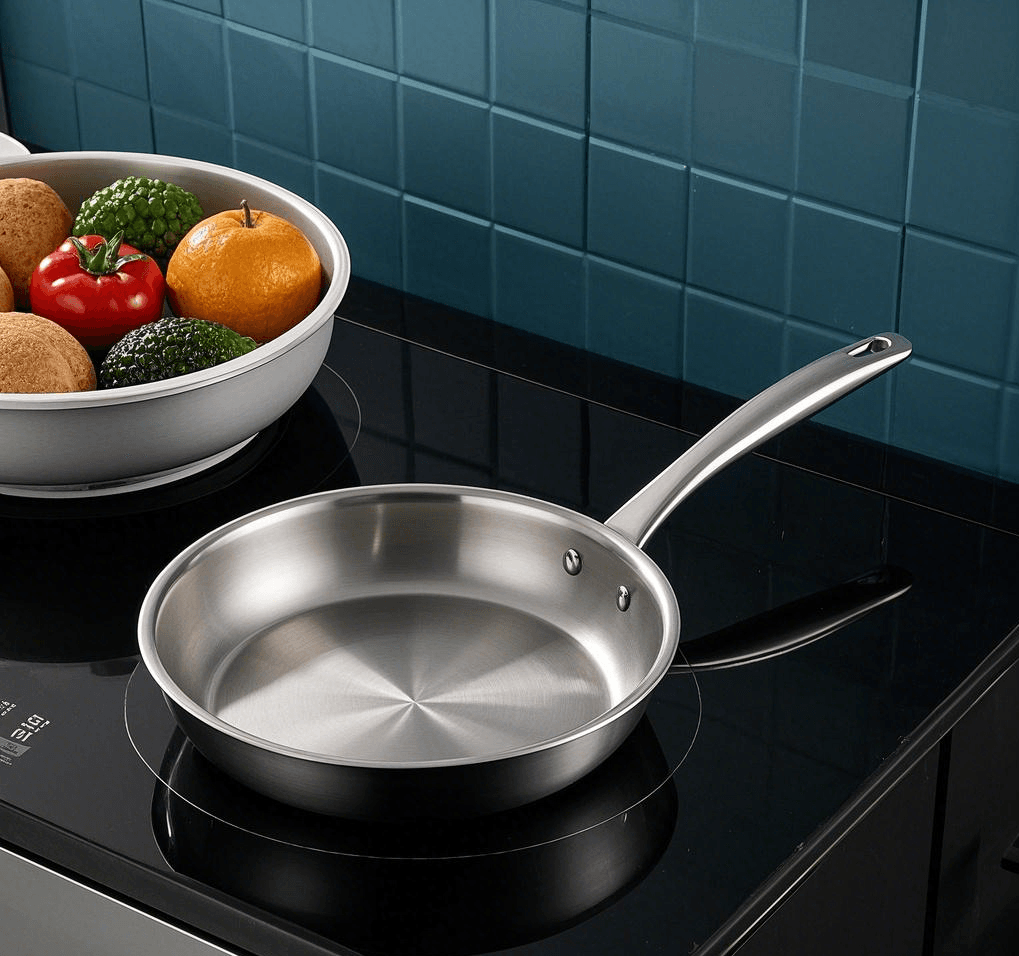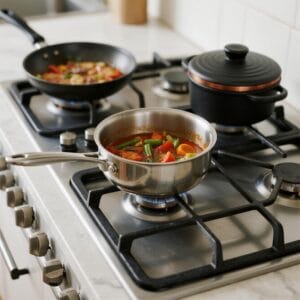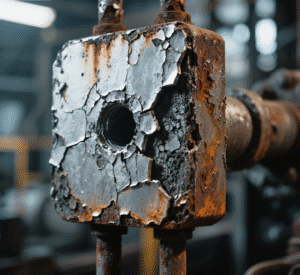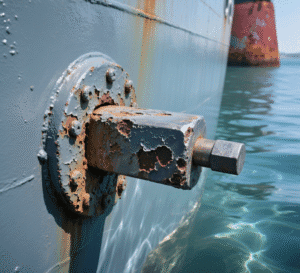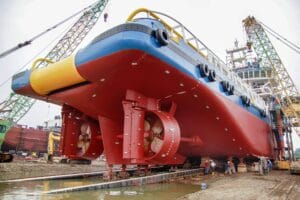Confused by cookware jargon? Need a reliable pan that heats evenly for everyday frying? A tri-ply frying pan uses layered metals for great performance and durability.
A tri-ply frying pan has three bonded layers: stainless steel inside (food contact), an aluminum core (heat distribution), and stainless steel outside (durability/induction). This construction provides even heating.
Before tri-ply materials were widely used, I already preferred stainless steel cookware over typical aluminum non-stick pans. Why? Fewer chemical coatings, more durable, and less likely to warp. Of course, quality matters – 304 stainless steel is much better for cooking surfaces than lower grades like 201 or 410.
Then, about a decade ago, tri-ply construction became popular. It cleverly combines metals: food-safe 304 stainless steel inside, fast-heating aluminum in the core, and durable, magnetic 430 stainless steel outside for induction compatibility. This solves common problems like hot spots and pans not working on induction stoves. I’ve personally used tri-ply pans for over 12 years. They offer a great balance of weight, performance, durability, and easy cleaning. That real-world experience is why I now sell both the raw tri-ply material (circles) and the finished cookware. A tri-ply frying pan is one of the best examples of this technology in action – it cooks evenly, often needs less oil, avoids burning in spots, and is a healthy choice because there are no chemical coatings [^2]. It’s very popular, especially in Western markets. In fact, a recent project with a Swedish client focused heavily on tri-ply frying pans, showing the strong demand. Let’s dive deeper into what makes them special.
How to tell if a pan is triply?
So many pans look alike. How can you be sure you’re getting genuine tri-ply quality? Check the edge, weight, and see if a magnet sticks to the bottom.
Look closely at the pan’s rim; you might see distinct layers. A magnetic bottom (for induction) is common. Check the product description or packaging for "tri-ply" or "fully clad" confirmation.
Identifying true tri-ply, especially fully clad where the layers go up the sides, sometimes takes a little investigation. It’s not always obvious just by looking.
Checking the Clues
Here’s what I look for, and what I advise customers to check:
- Visual Inspection (Rim): Carefully examine the top edge or rim of the frying pan. On many fully clad tri-ply pans, you can sometimes see faint lines separating the layers – the gleam of the inner stainless steel, the slightly duller (often thicker) aluminum core, and the outer stainless steel. It’s not always perfectly clear, but it’s a good potential indicator. Pans with just a disc on the bottom won’t show layers on the rim.
- Weight and Feel: Tri-ply pans usually feel noticeably heavier and more solid than basic single-layer stainless steel pans or lightweight aluminum non-stick pans. They have a balanced, substantial feel due to the multiple metal layers. If it feels flimsy or very light, it’s probably not tri-ply .
- Magnetic Test (Bottom): This is a key test for induction compatibility, which most modern tri-ply aims for. The outer layer is typically 430 stainless steel because it’s magnetic. Take a simple fridge magnet and see if it sticks firmly to the outside bottom of the pan. If it does, it’s induction-ready, which strongly suggests a tri-ply or multi-ply construction. Note: The magnet likely won’t stick to the inside (304 steel) or the sides if they are aluminum.
- Manufacturer’s Description: This is often the most reliable way. Check the packaging, product tag, or online listing. Look for terms like "tri-ply," "3-ply," "fully clad," "multi-clad," or descriptions mentioning an aluminum core sandwiched between stainless steel layers . Brands producing tri-ply are usually proud of it and will state it clearly.
| Feature | How to Check | What it Suggests (If Positive) |
|---|---|---|
| Rim Appearance | Look for visible lines separating metals | Fully clad multi-layer construction |
| Weight | Feels solid and heavier than basic pans | Dense, multi-layer build |
| Magnetic Bottom | Magnet sticks firmly to outside base | Induction compatible (likely 430 steel) |
| Description | Read packaging/tag/online info | Explicit confirmation of "tri-ply" etc. |
By using these clues together, you can be more confident you’re identifying a true tri-ply frying pan.
What are the disadvantages of tri-ply stainless steel?
Tri-ply sounds great, but is it perfect? Before buying, consider that it can be heavier, cost more, and food might stick if you don’t use it correctly.
The main disadvantages are higher cost compared to basic pans and increased weight due to the layers, making them potentially cumbersome. Also, they are not non-stick, requiring proper technique.
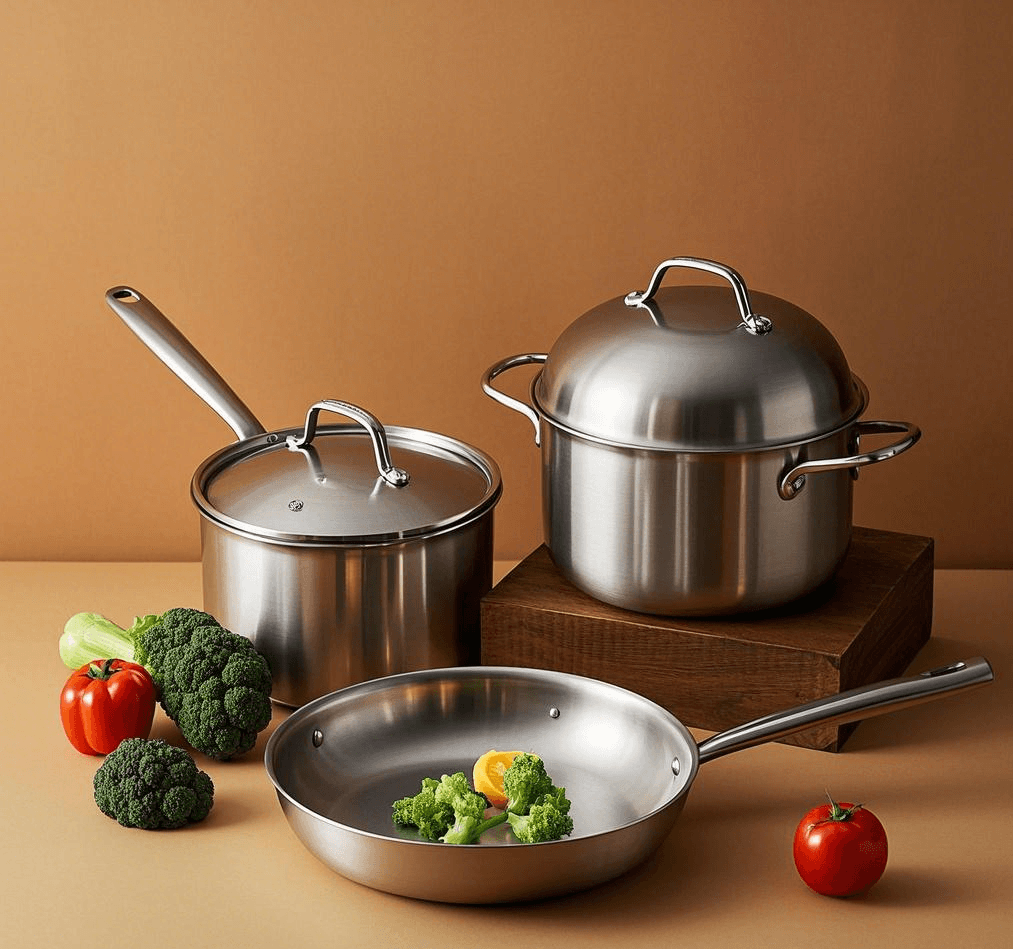
While I’m a big fan of tri-ply, especially for frying pans where even heat matters so much, it’s important to be realistic about the potential downsides.
Considering the Trade-offs
Here’s an honest look at what you should know before investing:
- Weight: That three-layer construction (steel-aluminum-steel) definitely adds weight compared to a simple aluminum pan or even some single-layer stainless steel ones. While this contributes to the sturdy feel and even heating, it can make the pan harder to lift and toss food in, especially larger pans . Some users prefer lighter cookware, finding tri-ply a bit heavy for daily maneuvering. It’s a trade-off between performance and ease of handling.
- Cost: Quality tri-ply cookware is generally more expensive than standard stainless steel or non-stick options . The materials themselves (especially good quality steel and aluminum) and the complex process of bonding the layers together increase manufacturing costs. I always frame this as a long-term investment – a durable tri-ply pan can last for decades, potentially outliving several cheaper pans , but the initial price is higher.
- Sticking Issues (Technique Required): Let’s be clear: tri-ply stainless steel is not non-stick in the way Teflon pans are. Food can definitely stick if you don’t use the right technique. This usually involves preheating the pan properly before adding oil or fat, and then letting the food cook undisturbed to form a crust before trying to move it. There’s a learning curve if you’re used to slick non-stick surfaces.
- Cleaning & Appearance: While generally easy to clean with soap and water, stuck-on food can require soaking or scrubbing (use non-abrasive pads to avoid scratches). Stainless steel can also show fingerprints, water spots, or develop a bluish or golden "heat tint" over time. This doesn’t affect performance but might bother those who want their pans looking pristine. Special cleaners can often restore the shine.
Knowing these points helps you make an informed decision based on your budget, cooking style, and preferences.
Is Triply cookware healthy?
Concerned about chemicals from cookware? Worried about scratched non-stick surfaces? Tri-ply offers a stable, non-reactive stainless steel surface for safe cooking.
Yes, tri-ply cookware is considered very healthy. The stainless steel cooking surface (usually 304) is non-reactive, stable at high heat, and doesn’t have chemical coatings that can leach into food.

This is a really important question, and one I take seriously both as a user and a supplier. From my perspective, health and safety are major advantages of tri-ply stainless steel.
A Safe Cooking Choice
Here’s why I consider tri-ply a healthy option for your kitchen:
- Non-Reactive Cooking Surface: The inner layer of quality tri-ply cookware is almost always made from 304 grade stainless steel (often marketed as 18/8 or 18/10 stainless steel) . This type of steel is chosen specifically because it’s very stable and non-reactive . It won’t react with acidic ingredients like tomatoes, wine, or lemon juice, meaning it won’t alter the taste of your food or leach metallic elements into it.
- No Chemical Coatings: This is a key differentiator from many non-stick pans. Tri-ply pans have a pure stainless steel cooking surface. There are no PFOA, PTFE (like Teflon), or other synthetic coatings that could potentially scratch, degrade over time, or release harmful fumes if overheated. This eliminates concerns some people have about the chemicals used in or released from certain non-stick coatings.
- Stability at High Temperatures: Stainless steel and aluminum are stable metals that can handle the high heat needed for frying and searing without breaking down or releasing harmful substances. The pan remains structurally sound and safe even when used at high temperatures.
- Durability Equals Safety: Because the stainless steel surface is hard and resistant to scratches and corrosion, it stays smooth and intact for a long time. This prevents pitting or damage where food particles or bacteria could get trapped, and ensures the integrity of the cooking surface isn’t compromised.
In my years working with food-contact materials, high-quality stainless steel has always been a trusted choice for safety and hygiene. Tri-ply construction utilizes this safe material on the cooking surface while using aluminum efficiently for heat transfer, giving you the best of both worlds.
Is tri-ply cookware worth it?
Tri-ply costs more, so is it worth the investment? If you value even cooking, durability, and versatility across cooktops, the answer is likely yes .
Yes, tri-ply cookware, including frying pans, is generally worth it for those who cook regularly and value performance, durability, and even heating. It’s a long-term investment that often outlasts cheaper alternatives.
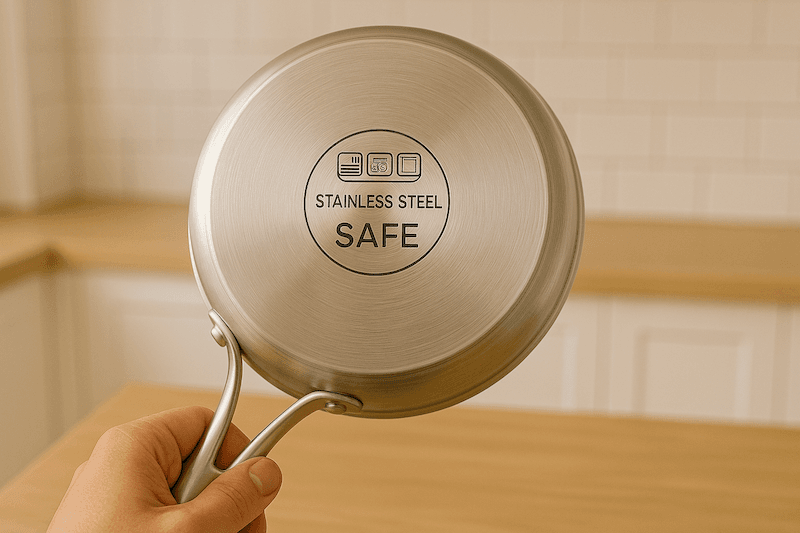
This is the bottom-line question for many buyers, especially given the higher price tag compared to some other types of cookware. In my experience, both using it myself for over a decade and supplying it to manufacturers, the answer for most serious home cooks is a definite yes.
Balancing Cost and Benefit
Here’s why I believe tri-ply frying pans offer excellent value despite the cost:
- Superior Cooking Performance: The even heat distribution provided by the aluminum core is the standout feature. For a frying pan, this means more consistent searing, browning, and sautéing without annoying hot spots that burn food in one area while leaving another undercooked. This leads to better results and less frustration .
- Exceptional Durability: Tri-ply pans are built to last. The stainless steel layers resist warping, scratching (far better than non-stick coatings), denting, and corrosion. Unlike non-stick pans that often need replacement every few years as the coating wears off , a well-cared-for tri-ply pan can genuinely last for decades. This longevity makes the initial cost more reasonable over time.
- Health and Safety: As we just discussed, the stable, non-reactive stainless steel surface provides a safe and healthy cooking environment without the concerns associated with some coatings .
- Versatility: Most tri-ply frying pans work efficiently on all common stovetops, including gas, electric, ceramic, and induction (thanks to the magnetic outer layer) . Many are also oven-safe (check handle material limitations), adding to their usefulness.
- Long-Term Economics: Think about the cost per year. If a $100 tri-ply pan lasts 15 years, that’s under $7 per year. If a $30 non-stick pan needs replacing every 3 years, that’s $10 per year, and you have the hassle of replacing it multiple times.
For someone who cooks frequently, appreciates quality tools, and wants reliable, consistent results, the investment in a tri-ply frying pan pays off through better cooking experiences and long-lasting durability. It’s a workhorse piece of cookware where the benefits of the construction truly shine.
Conclusion
A tri-ply frying pan uses layered metals for superior, even heating and durability. While heavier and pricier, its performance, health benefits, and longevity make it a worthwhile investment for many cooks.

